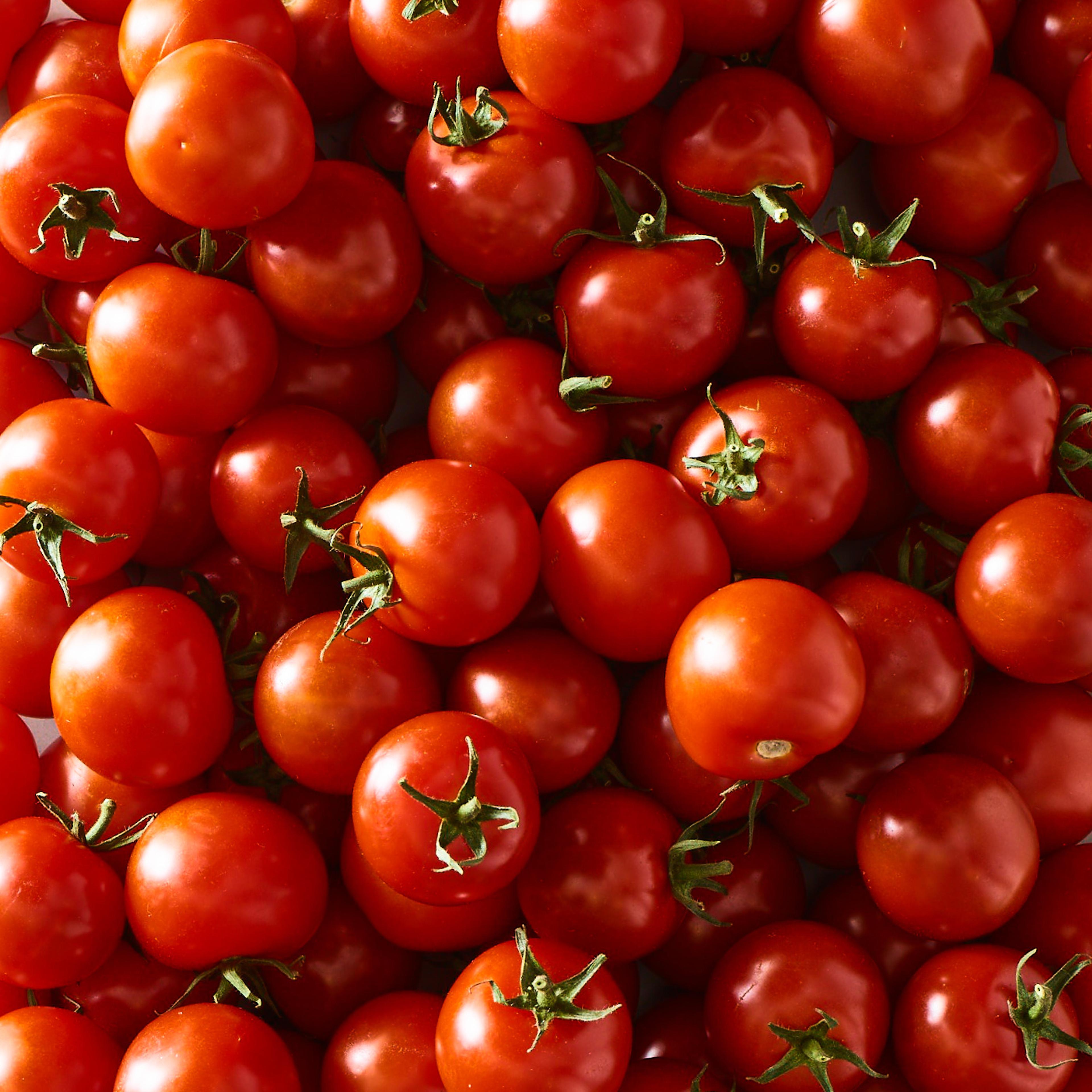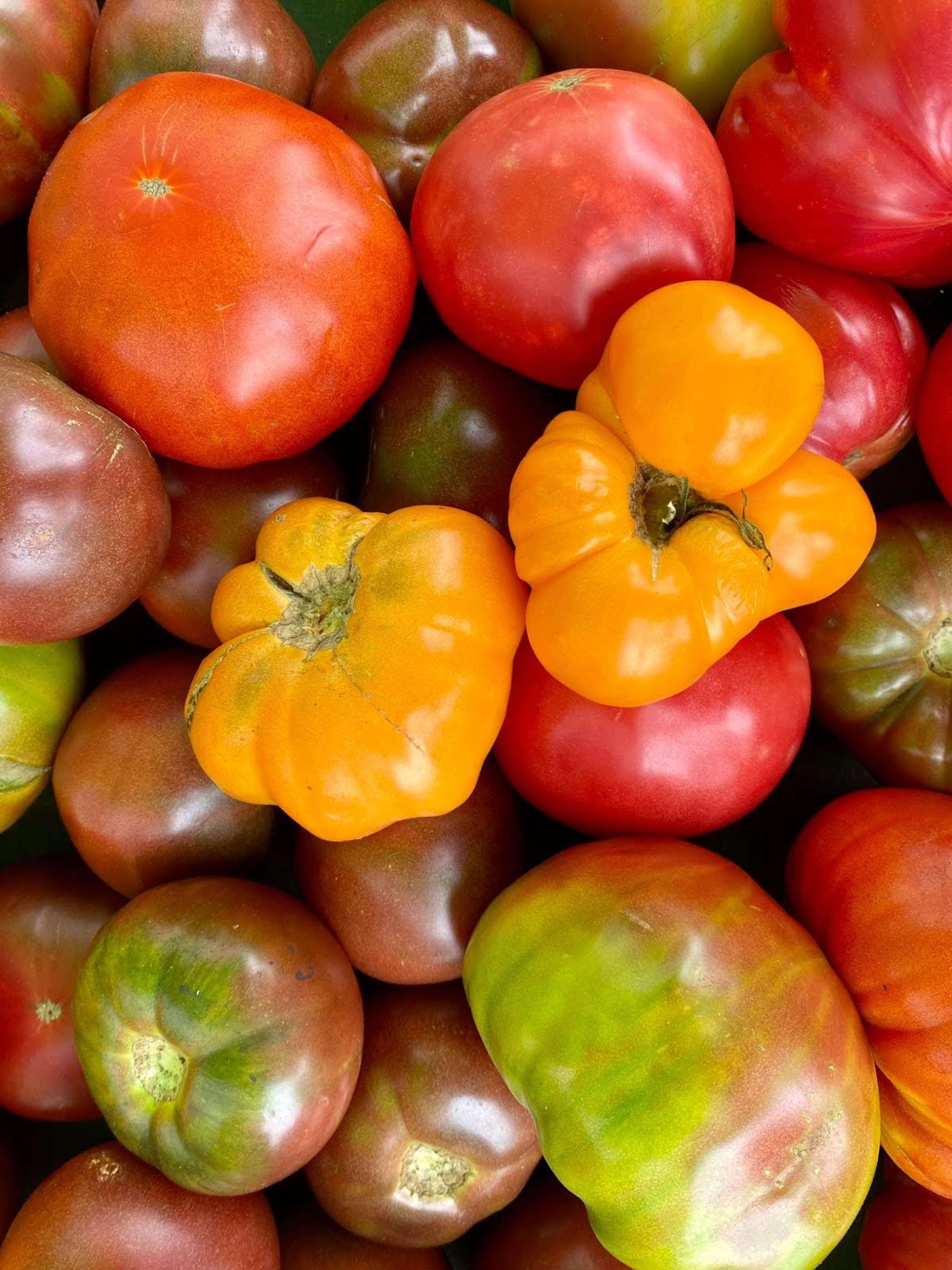Why Do Tomatoes Taste So Good? Science Explains It
A food scientist unpacks the complexity behind your favorite summer fruit.
ByAmy Tran
Published On

Photo by James Ransom
Tomatoes are the superstar of late summer produce, and for good reason—ripe and locally grown summer tomatoes are bursting with flavor, sweetness, and juiciness that can’t be replicated at any other time of year. As a food scientist, I can’t help but think about tomatoes from an analytical perspective—it’s their mix of sweet, tart, and umami flavors amplified by characteristic aroma compounds that make tomatoes so appealing.
The Importance of Aroma
Tomatoes naturally contain sugars (sweetness), acid (tartness), glutamates (umami or savoriness), and volatile organic compounds—25 to 30 of which impart their characteristic aroma. While a great tomato offers a pleasing balance of sweet, sour, and umami, it’s the aroma compounds that truly define the flavor of tomatoes. If, for instance, you were to put a tomato in your mouth while holding your nose, you could taste some of the sweetness and sourness of the tomato - but then release your nose, and the complex aroma that floods your senses should give you an idea of the importance of aroma. A tomato just isn’t a tomato without the aroma contributing to its flavor.

Photo by Amy Tran
On Supermarket Tomatoes
Of course, great tasting tomatoes are not always easy to find. Most of us have, at one point or another, been betrayed by the uniformly round, bright red off-season supermarket tomatoes that give way to a mealy interior with the softest whisper of flavor. In fact, supermarket tomatoes have historically been bred for specific utilitarian characteristics—the “best” supermarket tomatoes are those that are red and round and that provide high yield to farmers, resist disease, and have thick skins to stand up to long cross country or international supply chains. Flavor was not historically considered a requisite trait for breeders to consider because it didn’t provide increased yield, shelf life, or ultimately—economic value.

Photo by Amy Tran
Peak Season
With supermarket tomatoes offering just a shadow of tomatoes’ full potential, summer is a time of celebration for tomato lovers. Growing seasons vary throughout the country, but it’s often late summer when tomatoes ripen and start showing up in abundance at farmers markets. Certain heirloom varieties in particular are the antithesis of most supermarket tomatoes. They have not been bred to have long shelf lives or to withstand cross country journeys—so they are best eaten within days of picking and by consumers close to where they are grown. They’re also not bred to be uniform in size, shape or color—hence the rainbow of colors, shades and stripes and the shapes that start round but often sprout small appendages. Their appearance has character—they slice up and present beautifully in spite of their non-uniformity.

Photo by Amy Tran
Picking the Perfect Tomato
For tomato aficionados, it’s worth the premium price to have flavorful produce at its peak. How can you be sure you’re investing in the best tomato for your buck? You can’t usually judge the book by its cover, so you’ll need to get your other senses involved. A sniff of the tomato at its stem should give you some aroma, and heavier tomatoes will tend to be juicier. Just please, don’t squeeze the tomatoes! Heirloom varieties in particular are thin skinned and delicate, and well-meaning squeezes can cause bruising or oozing and lead to waste. Note the tomato variety where possible—some tomatoes have specific taste characteristics that might appeal to you (more sweet versus more umami or meaty, for example. A quick internet search of the tomato name can summarize these taste descriptors). Also consider asking the growers for a recommendation—they are the experts on their produce and should be able to provide guidance.
Eating & Enjoying at Home
With your choicest tomatoes selected, the best time to eat them is now—locally grown tomatoes have typically been picked within the past day or so and probably are not in need of additional ripening. If you aren’t able to eat your ripe tomatoes within one to two days, consider refrigerating them. Though you might have heard that refrigerating tomatoes is a no-no, this extensive experiment indicates that refrigeration can be helpful for extending the shelf life of ripe tomatoes, preventing them from rotting on your counter—just make sure you let the tomatoes come back to room temperature before eating them.
How to Cope in the off Season
You can certainly make it work with supermarket tomatoes if you have a tomato itch that needs to be scratched. For fresh tomatoes, try cherry tomatoes, which tend to be sweeter than larger sized tomatoes. Salting tomatoes both draws out water via osmosis, concentrating the tomato flavor, and the salt itself seasons the tomatoes, amplifying their flavor. Roasting tomatoes is another great option—this leads to evaporation of water, again concentrating the tomato flavor, and it also brings about brown, caramelly notes. And if all else fails, switch your focus to the fruits or vegetables that are in season—it will only be a matter of months before it’s tomato time
again.
- 1
Use These Tomato Care Tips for the Best Homegrown Tomatoes
We asked a NYC rooftop farmer to share his tricks for juicier, yummier tomatoes.
- 2
45 Best Tomato Recipes & You Can't Tell Me Otherwise
We're making the most of summer days with tomato toast, gazpacho, blistered tomato pasta, and more.
- 3
